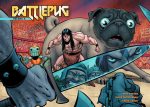 I talked with Mike once before about Battlepug, and was happy to do it again following its recent grande finale. I asked him more about the process for his webcomic, how he feels about ending it and his Image series Revival. Read on to learn how Mike’s grown as an artist and his experiences concurrently drawing […]
I talked with Mike once before about Battlepug, and was happy to do it again following its recent grande finale. I asked him more about the process for his webcomic, how he feels about ending it and his Image series Revival. Read on to learn how Mike’s grown as an artist and his experiences concurrently drawing […]
Viewing: Blog Posts Tagged with: matt chats, Most Recent at Top [Help]
Results 1 - 20 of 20
Blog: PW -The Beat (Login to Add to MyJacketFlap)
JacketFlap tags: Interviews, Comics, Webcomics, Revival, E-publishing, Mike Norton, Battlepug, matt chats, Add a tag
Blog: PW -The Beat (Login to Add to MyJacketFlap)
JacketFlap tags: Interviews, Comics, Portland, Oni, welcome back, matt chats, chris sebela, heartthrob, robert wilson iv, Add a tag
 Chris Sebela is everywhere. I first became aware of him thanks to the Everest crime thriller High Crimes from Monkey Brain, and since then he has worked with an array of publishers from Marvel to DC to Image to Dark Horse and, recently, with Oni Press and Boom! Studios for his latest creator-owned series. I talked to Chris about […]
Chris Sebela is everywhere. I first became aware of him thanks to the Everest crime thriller High Crimes from Monkey Brain, and since then he has worked with an array of publishers from Marvel to DC to Image to Dark Horse and, recently, with Oni Press and Boom! Studios for his latest creator-owned series. I talked to Chris about […]
Blog: PW -The Beat (Login to Add to MyJacketFlap)
JacketFlap tags: Joshua Hale Fialkov, matt chats, tony fleecs, jeff steinberg, Interviews, Comics, Oni, My Little Pony, Add a tag
 Tony Fleecs had been grinding as an indy cartoonist for years, but it was his work for the My Little Pony license at IDW that got him the most attention. Now, he’s returning to creator-owned with Jeff Steinberg: Champion of Earth, written by writer and friend Josh Fialkov, for Oni Press. I talked to Fleecs […]
Tony Fleecs had been grinding as an indy cartoonist for years, but it was his work for the My Little Pony license at IDW that got him the most attention. Now, he’s returning to creator-owned with Jeff Steinberg: Champion of Earth, written by writer and friend Josh Fialkov, for Oni Press. I talked to Fleecs […]
Blog: PW -The Beat (Login to Add to MyJacketFlap)
JacketFlap tags: comic design, tim daniel, Interviews, Comics, curse, matt chats, Add a tag
 I’ve enjoyed Tim Daniel’s design work since he started working on books with current Captain America writer Nick Spencer at the Image Comics imprint Shadowline. I was even lucky enough to have him design a logo for a series I wrote once upon a time. Ahead of my upcoming, extensive piece about the state of design in […]
I’ve enjoyed Tim Daniel’s design work since he started working on books with current Captain America writer Nick Spencer at the Image Comics imprint Shadowline. I was even lucky enough to have him design a logo for a series I wrote once upon a time. Ahead of my upcoming, extensive piece about the state of design in […]
Blog: PW -The Beat (Login to Add to MyJacketFlap)
JacketFlap tags: deer editor, Interviews, Comics, Kickstarter, Ryan K. Lindsay, matt chats, Add a tag
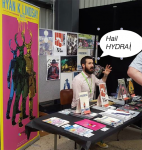 For a comic inspired by a typo, Deer Editor has already had a pretty rich history. A successful Kickstarter, especially given that the comics were only offered digitally, was conducted for the first volume. A new campaign for the sequel is currently underway. I spoke to project manager and writer Ryan K. Lindsay about building […]
For a comic inspired by a typo, Deer Editor has already had a pretty rich history. A successful Kickstarter, especially given that the comics were only offered digitally, was conducted for the first volume. A new campaign for the sequel is currently underway. I spoke to project manager and writer Ryan K. Lindsay about building […]
Blog: PW -The Beat (Login to Add to MyJacketFlap)
JacketFlap tags: Interviews, Comics, Image, scholastic book fair, Image Comics, matt chats, oddly normal, otis frampton, Add a tag
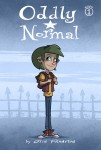 Oddly Normal marked a rare foray for Image Comics into the children’s book market, and it appears to have been a successful one. Image got the series into the well-known, widely attended Scholastic Book Fair, which opens Oddly Normal up to a whole new audience and expands its commercial options. Creatively, Oddly Normal is a […]
Oddly Normal marked a rare foray for Image Comics into the children’s book market, and it appears to have been a successful one. Image got the series into the well-known, widely attended Scholastic Book Fair, which opens Oddly Normal up to a whole new audience and expands its commercial options. Creatively, Oddly Normal is a […]
Blog: PW -The Beat (Login to Add to MyJacketFlap)
JacketFlap tags: Interviews, Comics, DC, Vertigo, Gerard Way, matt chats, Art Ops, killboys, neverboy, shaun simon, Add a tag
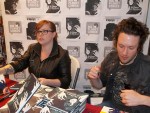 A collaboration with rockstar and comics writer extraordinare Gerard Way on Killjoys guaranteed that I’d read something written by Shaun Simon, but the stellar quality of his work is what keeps bringing me back. Neverboy, illustrated by Tyler Jenkins and published by Dark Horse, really wowed me. Simon’s follow-up to that is Art Ops, a […]
A collaboration with rockstar and comics writer extraordinare Gerard Way on Killjoys guaranteed that I’d read something written by Shaun Simon, but the stellar quality of his work is what keeps bringing me back. Neverboy, illustrated by Tyler Jenkins and published by Dark Horse, really wowed me. Simon’s follow-up to that is Art Ops, a […]
Blog: PW -The Beat (Login to Add to MyJacketFlap)
JacketFlap tags: matt chats, Interviews, Comics, Image, Ryan Kelly, Si Spurrier, cry havoc, Add a tag
 Based on the first two issues I previewed, Si Spurrier with Ryan Kelly have crafted a captivating story about identifying the monsters inside and out. Cry Havoc, described as mixing “the hard-boiled militaria of Jarhead with the dark folklore of Pan’s Labyrinth,” is a fascinating piece of work, so I was excited to speak to […]
Based on the first two issues I previewed, Si Spurrier with Ryan Kelly have crafted a captivating story about identifying the monsters inside and out. Cry Havoc, described as mixing “the hard-boiled militaria of Jarhead with the dark folklore of Pan’s Labyrinth,” is a fascinating piece of work, so I was excited to speak to […]
Blog: PW -The Beat (Login to Add to MyJacketFlap)
JacketFlap tags: Marcos Martin, Brian K Vaughan, panel syndicate, matt chats, albert monteys, universe!, Interviews, Comics, Webcomics, Digital Comics, Add a tag
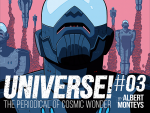 Brian K. Vaughan, Marcos Martin and friends made a big splash with their digital-first, pay-what-you-want series The Private Eye. But they always intended for the publisher they created, Panel Syndicate, to house more than just their stories. The first and to date the only other work to appear on Panel Syndicate is Universe! from cartoonist […]
Brian K. Vaughan, Marcos Martin and friends made a big splash with their digital-first, pay-what-you-want series The Private Eye. But they always intended for the publisher they created, Panel Syndicate, to house more than just their stories. The first and to date the only other work to appear on Panel Syndicate is Universe! from cartoonist […]
Blog: PW -The Beat (Login to Add to MyJacketFlap)
JacketFlap tags: Interviews, Comics, Image, lazarus, black magick, Stumptown, greg rucka, lady sabre, backmatter, matt chats, Add a tag
 Greg Rucka has been on a tear lately. Not only has he written two Star Wars novels and a comic book series set post-Empire, he’s also been impressing in the creator-owned sphere. Lady Sabre, Lazarus and Stumptown continue running on all cylinders, and his newest series, Black Magick with Nicola Scott, recently launched to great acclaim. I […]
Greg Rucka has been on a tear lately. Not only has he written two Star Wars novels and a comic book series set post-Empire, he’s also been impressing in the creator-owned sphere. Lady Sabre, Lazarus and Stumptown continue running on all cylinders, and his newest series, Black Magick with Nicola Scott, recently launched to great acclaim. I […]
Blog: PW -The Beat (Login to Add to MyJacketFlap)
JacketFlap tags: Comics, Webcomics, daily comics, Crowdfunding, Patreon, matt chats, gumroad, john cullen, nhoj, Add a tag
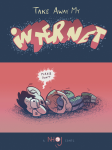 Irish cartoonist NHOJ (John Cullen) has been posting his Daily Comics for over 650 days at this point. They are often funny, sometimes poignant and always beautiful and entertaining. Here’s a look at his process. Fascinated by the kind of dedication such an effort takes, I asked NHOJ some questions about such topics as his […]
Irish cartoonist NHOJ (John Cullen) has been posting his Daily Comics for over 650 days at this point. They are often funny, sometimes poignant and always beautiful and entertaining. Here’s a look at his process. Fascinated by the kind of dedication such an effort takes, I asked NHOJ some questions about such topics as his […]
Blog: PW -The Beat (Login to Add to MyJacketFlap)
JacketFlap tags: Interviews, Image, Wayward, Image Comics, Figment, Top News, Jim Zub, Skullkickers, matt chats, Add a tag
Jim Zub, easily my most-interviewed creator, is on a tear lately. In addition to wonderful corporate-owned work like Figment, he more than stuck the landing on Skullkickers and he nailed the second arc of his new series Wayward. I talked to him about both beginnings, endings and everything in-between. When did you map out the overall story […]
Blog: PW -The Beat (Login to Add to MyJacketFlap)
JacketFlap tags: Interviews, Oni, zander cannon, Oni Press, Top News, matt chats, kaijumax, Add a tag
Zander Cannon has been hard at work on his series Kaijumax in 2015, which he writes, draws, colors and letters. He’s delivering odd, amusing, poignant stories about Godzilla-like creatures in a jail designed by men, the real monsters. I interviewed him about the series, how Oni Press makes for a good partner and more. How did you come up with the […]
Blog: PW -The Beat (Login to Add to MyJacketFlap)
JacketFlap tags: Comics, IDW, Top News, tet, comics experience, matt chats, Paul Allor, paul tucker, Add a tag
I’ve had the pleasure of getting to know Paul Allor, mostly through Comics Experience, a workshop for people who want to create comics. He’s had a meteoric rise in the last few years, and next for him is a war/romance miniseries published by IDW and Comics Experience called TET. He sent me all four issues, […]
Blog: PW -The Beat (Login to Add to MyJacketFlap)
JacketFlap tags: Odd Schnozz and the Odd Squad, Interviews, Comics, Oni, Top News, matt chats, jeffrey burrandt, music in comics, Add a tag
As a medium that requires you to listen, music doesn’t seem like it would meld with traditional comic book storytelling. That assumption, however, has been challenged by a number of writers and artists who want to share their passion for music with comics readers. One such author is Jeffrey Burrandt, who I spoke to about […]
Blog: PW -The Beat (Login to Add to MyJacketFlap)
JacketFlap tags: Indies, anthology, Top News, matt chats, glenn moane, outre, Add a tag
Outré is a little-known but very well-polished anthology series that releases new issues twice a year, free on their website and for $0.99 on ComiXology. Even though they receive relatively few submissions, the stories have a consistent and impressive level of quality. Intrigued by it, I spoke to one of the editors, Glenn Moane, about the process of putting Outré together.
What led to the creation of Outré?
When we tabled together at Oslo Comics Expo back in 2012, Magnus and I started talking about anthologies and how it’d be nice if there were more theme-oriented ones around, as opposed to just random collections of comic short stories. Not that we had anything against the latter, but it wasn’t what were looking for, so we came to the conclusion that we had to create one ourselves. We also wanted the anthology to feature work by up-and-coming creators, so in order to get as many eyes on their work as possible, it made sense to offer each issue for free. After settling on the theme for the first installment we put out the call for submissions from both writers and artists. After choosing the strongest story submission and getting their scripts into the right shape, we teamed the writers up with the artists we felt would be a good fit and got the ball rolling from there. After a period of time Outré #1: Responsibility was a reality, and we’ve been repeating the process twice a year ever since.
You receive pitches for stories instead of completed ones. How does that work better than asking for finished comics?
Since we want to put out a quality product, it makes sense for us to get involved right from the start and try to make a writer’s scripts the best it can be. Sometimes a story is ready to go after the first draft and sometimes it takes three. Both Magnus and I have been writing comics for a few years now, and if it’s one thing we learned it’s that it is always healthy to get some feedback on our scripts before we send it off to be illustrated. Also, some of the writers who pitch to Outré are just starting out, and they may not yet have established a network of creators to work with. So if a new writer comes up with a great idea for a story after seeing what theme we’ve chosen for an upcoming issue, presenting it to us is the way to go. Now, for our latest issue we asked for pitches with a creative team intact, and those we picked got produced in the time leading up until the release.
The inherent risk is some stories won’t turn out as good as they appear on paper. Have you ever had to accept a pitch but reject the finished product?
Not yet. We’ve had artists bail on us, but fortunately we’ve always been able to bring in a suitable replacement before the deadline was up.
I assume the name of the comic is, in addition to a word of its own (meaning “unusual and startling”), a play on the word auteur. How do you keep the quality level high while still letting creators feel like they are true auteurs with full ownership over the material?
In addition to pushing the writer to make his script as solid as possible, we do the same with the remaining members of a story’s creative team. The creators who contact us are hungry as hell to get their work out there and in front of readers, and motivated by the fact that the finished product will be available on our site forever. And we don’t own any of the stories. They belong to the creators, who can do whatever they like with them after an issue is released.
Creatively and practically, what are the appeals of including one-page, one-image stories?
When the idea for Outré was conceived we wanted to create a full and satisfying package that could resemble a magazine. We used to feature two interviews in each issue, one with an industry professional and the other with a creator whose work was featured within. To add stand alone illustrations that revolved around the issue’s theme made sense, and it was also a nice way to get more creators involved. And some of these illustrations look really good as well. Practically, overseeing the production of a single illustration is a less time-consuming than getting a whole short story done. Contacting a creator and throwing the theme his or her way was usually enough, and after a while we had a nice illustration in our inbox.
Why don’t you charge for Outré?
To attract as many people to the anthology as possible, also readers who may not read comics on a regular basis like you and me. By offering each
issue for free, there should be really no incentive not to download it and check it out at some point, unless the reader is allergic to the theme in question and/or only interested in a specific genre. Anthologies are a tough sell in the Direct Market, but since we love the format and want more readers to get excited about it, the free and digital option was the way to go. A seasoned comics fan may be reluctant to pick up a book featuring work by creators he’s never heard of before, but if all it costs is a couple of taps to read the issue on his or her tablet, why shouldn’t s/he?
Do you ever worry that offering it for free might diminish its value in some people’s eyes?
I’m sure it’s happened. We try to market Outré as a professional-looking anthology filled with quality stories, and 95% of the reviews we’ve received have been more than positive. But I’m sure there are plenty of readers who don’t bother reading those reviews in the first place, and unfortunately I’ve yet to see an anthology making a huge comics news splash across the board. That’s just the way it is.
But recently Outré made its debut on Comixology, where it’s not possible to offer products for free unless it’s part of special campaign. So we priced each issue at $0.99, and told our regular readers that one could pick them up if they wanted to experience the stories in the cool function that is Guided View. I’m certain a good handful of the customers who bought the issues weren’t aware of our anthology in the first place, so we’ve probably reached a few more readers, which is great.
Not only that, a couple of days ago I found out that Outré #1 & 2 had been uploaded on a torrent site, along with several other new comics. Since those issues are the only ones available on Comixology as of now (#3 & 4 are on their way), the uploader more than likely got them through that digital platform. Now, if piracy leads to Outré getting in the hands of more readers – readers who may be unfamiliar with the creators and their work, then I’m all for it in this particular case.
As a not-for-profit business, is it difficult to keep a regular publishing schedule?
Releasing an issue twice a year has proven to be the best for us. With no budget to speak of, we can only rely on the passion of the creators we work with, and that they have the time and opportunity to work on the stories in their free time. This is why we give our creators long deadlines, and a story greenlit in December won’t be released until June. The creative team then has about six months to get their 8 or 10-pager done in this time period, which should be enough. I say “should”, because life and other opportunities can pop up, and if an artist has to take a break from working on a Outré story because of a paid job offer, we’re the first to understand. But the work gets done, even if some stories take longer than others.
So yeah, two issues each year is enough. When we began toying with the idea we did actually talk of a quarterly schedule, but we see now that we then had to produce two issues more or less at the same time, and handle twice as many creative teams. And right now the anthology business doesn’t pay well enough for us to even consider it.
What motivates you to publish Outré, since profit’s not a real factor?
It’s a pleasure to feel a script coming together and to see it come to life at the hands of a talented and passionate artist. That never gets old. And whenever an issue is finished it gives us a sense of satisfaction, and we take pride in the fact that we managed to pull it off once again, fueled only by us and the creators’ passion for comics.
Outré has also proven to be a great way for us to connect with other creators. I got to know colorist K. Michael Russell and artist/letterer Sean Rinehart through this anthology, who both helped me out on two of my own projects. Not to mention Brett Uren, whose story “Torsobear” in Outré #2: Hopelessness led to a whole anthology of its own, which I co-edited with Brett and wrote a story for. The first volume was uccessfully funded through Kickstarter last year and the campaign for the second one is currently ongoing.
Editing an issue of Outré takes time, but it’s also really fun. We’ve just began to talk about the next issue, and there’s a chance the theme this time around will be something horror-related. So we’re pretty excited about the stories this will lead to.
MATT CHATS is a weekly interview series with a person of prominence and/or value in the comic book industry. Find its author, Matt O’Keefe, on Twitter and Tumblr. Email him with questions, comments, complaints or maybe even praise at [email protected].
Blog: PW -The Beat (Login to Add to MyJacketFlap)
JacketFlap tags: matt chats, Comics, IDW, Samurai Jack, Top News, Jim Zub, Skullkickers, andy suriano, Add a tag
Even though I was never quite in love with the considered-a-classic Samurai Jack TV show, I’ve been infatuated by Samurai Jack the comic book since before Issue 1. The stoic, solemn character interacting with a colorful world works, in my opinion, better in sequential form than it does on the screen. Writer Jim Zub is a big reason why. That’s why I was excited to talk to him yet again, this time about wrapping up his continuation of Samurai Jack with Andy Suriano and other artists.
You said you felt like you could write Samurai Jack forever. What makes the character and the series feel so endurable to you?
Genndy and his crew put together a really powerful alchemical mix of elements when they created Samurai Jack. It’s a genre melting pot, fusing martial arts, fantasy, science fiction, and just about any other type of genre fiction you can imagine. It can be downright silly at times but also surprisingly deep and philosophical. That incredibly broad range, all of it “in-play,” is a wonderful sandbox to play in. It continually generates new ideas and I don’t think I could ever run out.
How was the pre-established history of Samurai Jack a challenge?
Over four seasons the Samurai Jack animation crew tackled a slew of amazing iconic concepts, so a lot of my initial brainstorming would slam up against something that had already been done. At first that was intimidating but over time it became a blessing.
How was it a blessing?
It forced me to push further and come up with unexpected approaches to the stories. It also convinced me that the best way for us to continue Jack’s legacy was to keep moving forward, coming up with new characters and situations instead of only re-using bits from the show.
Given that he worked on the original animated series, what was your collaboration like with Andy Suriano?
It was a real dream come true. No matter what crazy stuff I came up with, Andy was always there ready to take it to the next level with his art and design. The wilder he got with it, the more I wanted to push things with the next issue. We fed off of each other’s excitement.
Andy didn’t use the line-free style of the cartoon, but he channeled the look and feel of the show while optimizing it for the comic page. It wasn’t about rigidly following a model sheet. Andy’s work is all about translating that motion and energy to the page.
Did it take getting used to working with somebody who had been involved with the property since almost the beginning?
I kept expecting Andy to tell me I was doing it wrong, that I was doing something too weird or that “Jack wouldn’t do that”, but that didn’t happen. We just hit the ground running and Andy was 110% supportive of my story ideas. It was genuinely one of the most enjoyable projects I’ve ever worked on and Andy was a huge part of the reason why.
Have you talked about doing other work together?
Yeah, absolutely. At Emerald City Comicon last year we actually talked about the fact that this would end at some point and we should do other stories together. I know he’s super busy with his animation day job and working on Cosmic Scoundrels, but I really do hope we get to build more awesome stories real soon.
How is your working relationship different with fill-in artists?
Carlos Guzman, our awesome Editor at IDW, handled most of the fill-in stuff. I would write ahead not knowing who would be doing those one or two part stories and he cast artists based on their strengths.
I pushed really hard to get Brittney Williams on for the two part Scotsman story because I’m crazy about her artwork and felt she’d be a perfect fit. She did a great job.
Sergio Quijada was a huge Jack fan who peppered us with fan art until we couldn’t help but bring him on board. I’m really glad he had the chance to do the two part “Master of Time” story.
Were you involved in the decision to give Suriano an issue to write and draw on his own?
That was factored in early on. Before I was brought on board there was talk of Andy writing and drawing the whole series, so we wanted to make sure Andy could get a story idea he had percolating down on the page. The dialogue free “Caves of Crystal Calamity” story from issue 8 is also one I scripted based on Andy’s story idea.
As a long-time fan of Samurai Jack, what did you think of Andy’s issue 18?
It was great! It felt weird reading a Samurai Jack comic I didn’t have a hand in, but that’s what made it so cool. Andy built a cool action set piece and just went wild with it.
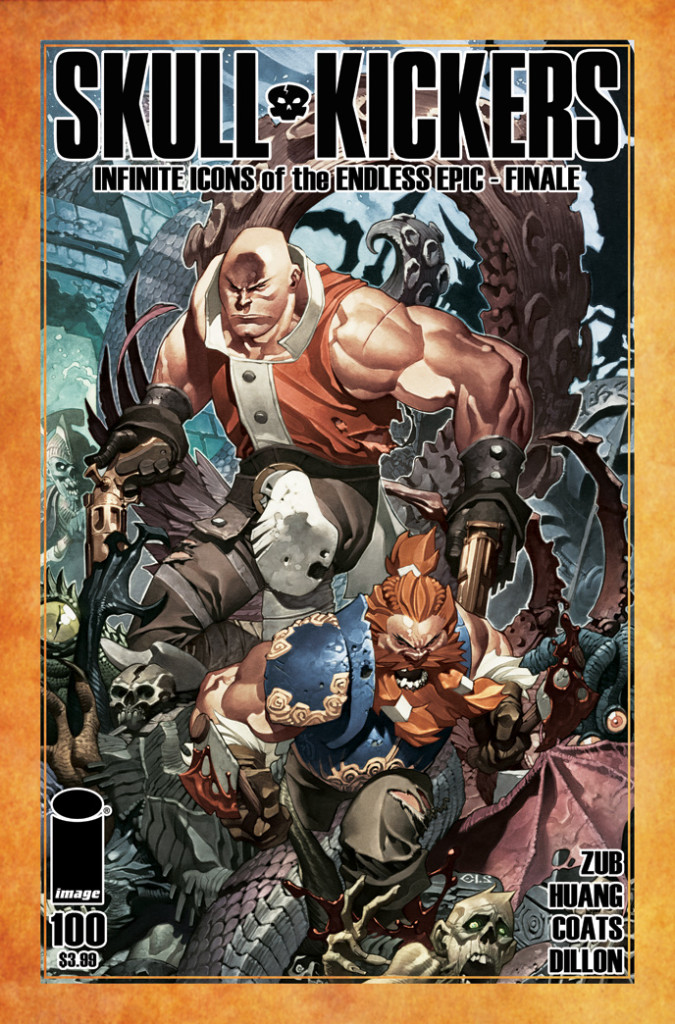
Zub’s longest-running series, Skullkickers, is ending soon after 36 issues. Art by Edwin Huang and Misty Coats.
Samurai Jack is your second-longest work, behind Skullkickers, and your longest on a property that you don’t own. What did you take away from doing a more lengthy run?
It was really nice settling in with a concept, almost indulgently so at times. Weird little ideas I’d brainstorm had time to gestate and I didn’t feel like I had to cram everything in all at once. Almost every story idea I included in my original pitch for the series found its way to the printed page at some point during the run and a lot of other little details or in-jokes made it in there too.
Samurai Jack #20 is such a definitive way to go out. With such a strong ending, would you feel comfortable returning to the character, if given the chance?
Absolutely. “Mako the Scribe” is definitive in a lot of ways and delivers a possible ending to the series, but it’s also cast in the far flung future. Andy and I had a bunch of other story ideas bubbling around in our heads that would happen before that big ending.
When I finished writing the 5 part “Quest For the Broken Blade” story I thought I’d gone as big as I could go with Jack and possible threats he could face, but within a few weeks I came up with a new 5 part epic that would have originally been issues #21-25. If Cartoon Network or IDW ever want us to do that story as a mini-series, standalone graphic novel, or animation (Genndy – Call me! :) ) I’m there in a heartbeat.
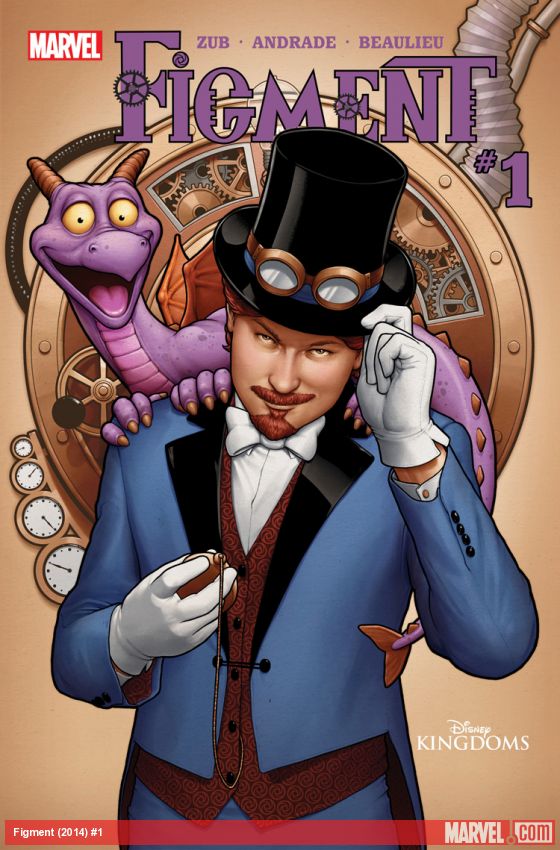
An amazing series even for people who have never been to a Disney theme park. Art by John Tyler Christopher.
Between Samurai Jack and Figment, you’ve had a lot of success breathing new life into older concepts. Are there any other forgotten or ignored properties that you’d like to revitalize next?
That’s hard to say. Samurai Jack and Figment weren’t properties I sought out and yet they became near and dear to me during the pitching/writing process. I enjoy the challenge of digging in with something unexpected and finding aspects that resonate with me (and hopefully readers too).
What do you think you added to the character of Samurai Jack during your run?
That’s a really hard thing to answer because the show was already a modern classic before I ever came along. We did our damnedest to build on the amazing work done on the show and tell entertaining stories that pushed Jack to new limits. In the end our contribution is up to the fans and Genndy Tartakovsky to decide. I hope people look back on these stories fondly and that they have a really long shelf life.
What new lessons did you learn from the experience?
A lot of my previous comic work was dialogue and sound effect heavy. I was afraid of letting a panel fall silent, like I was somehow not doing my job properly if there wasn’t a bunch of text jammed in there. Working on Jack opened me up to the strength of silence. He’s the silent stoic center while everything else is loud and crazy all around him.
More than that though, working on Samurai Jack recharged my creative batteries. Right before the Jack gig came along I hit a real low point in my writing career. I was supposed to take over Birds of Prey for the New 52 and when that inexplicably crumbled I genuinely felt like I’d missed my big chance and wouldn’t be able to get out of that slump. Writing Samurai Jack reminded me that this crazy creative career is more than just one opportunity. Making work I’m proud of over the long haul is the true measure of success.
The entire Samurai Jack series written by Jim Zub is available now. Find Jim on his website, Twitter and Tumblr.
MATT CHATS is a weekly interview series with a person of prominence and/or value in the comic book industry. Find its author, Matt O’Keefe, on Twitter and Tumblr. Email him with questions, comments, complaints, etc. at [email protected].
Blog: PW -The Beat (Login to Add to MyJacketFlap)
JacketFlap tags: Interviews, Comics, IDW, Samurai Jack, Top News, Jim Zub, andy suriano, matt chats, cosmic scoundrels, Add a tag
There are a lot of licensed comics out there that lack a certain legitimacy. Whether they’re good or bad, they’re not the main version of those characters and those worlds, and they’re usually created by people who weren’t involved in the original. IDW’s Samurai Jack circumvents that sense of not feeling like the “real” thing not only by continuing where the animated series left off but also with art by Andy Suriano, character designer of the Samurai Jack TV show. I spoke to Suriano about how it felt to wrap up the comic with Issue 20, along with other projects he’s involved in.
For a day job you’re working on cartoons of Mickey Mouse, who is Disney’s flagship character but has lately been off a lot of viewers’ radars. Does that give you a chance to experiment and get away with more?
I wouldn’t say Mickey Mouse is ever off anyone’s radar, but yes, Disney has been very supportive and encouraging with the type of designs, humor and stories we’ve been doing–playing to the strength’s of our team as well as the climate of today’s viewer, all the while keeping them timeless.
You were considered to write the series as well as handling art duties. How did the plans you laid out in your pitch differ from what you and Jim Zub did together with the series?
I think my stories were more stand alone that intersected occasionally versus Jim’s more connected, linear story arcs, which fit better with the direction they wanted for the book. I’m happy Jim landed the gig because he did a terrific job. But I am happy that a couple of my stories still made it into the final product with issues #8 and #18 which I got co-writing and writing on, respectively.
What unique elements do you think Zub added to Samurai Jack that weren’t there before the comic book series started?
Well, Jim brought the AWESOME that IS Jim to the series. He came on board with actually more knowledge about the episodes I worked on than even I did. I think he took the rules and framework of what we established with the animated series, and quickly took ownership of the character and was able to expand the mythos in a fun way.
In your mind, what are the most crucial elements of any Samurai Jack story?
Action. Humor. Visual storytelling.
Zub mentioned that he’s seen you draw a Samurai Jack sketch in less than 10 seconds. How long does it take you to draw a whole page?
It’s not about the time in which I do a drawing, it’s what I put into it. I purposely decided early on to use a more kinetic line quality on the book to intimate a sense of movement and speed, that was so integral to the animated series. It was my way to try and “animate” the stationary printed page.
A number of pages of Samurai Jack (such as Page 4 of #20) contain multiple actions but don’t use typical panel arrangements. How do you manage to keep everything coherent?
Ha! I close my eyes and hope for the best! Confusion to the reader or viewer is what will kill you, so I experiment a lot in the layout phase and see what works the best–and what leads the readers eye the best, to hopefully create a fluid, organic and fun experience.
Is Samurai Jack #20 your final stamp on the character, or would you return for more?
If IDW and Cartoon Network decided to do more and asked Jim, Josh and I back, we’d be back!
What did you take away from more time with the property?
I just enjoyed getting an opportunity to live in that world a little bit longer.
After two years revisiting Samurai Jack, where do you go from here?
Well, thankfully I still have my day job on the new Mickey Mouse shorts at Disney, I actively contribute to the new TMNT series at Nickelodeon and I do a weekly webcomic with homestarrunner.com creator Matt Chapman called Cosmic Scoundrels which I encourage you and anyone reading to check out and help us spread the word!
You can find Andy Suriano on social media like Twitter and Tumblr. Check in next week for my interview with Samurai Jack writer Jim Zub!
Blog: PW -The Beat (Login to Add to MyJacketFlap)
JacketFlap tags: gabo, matt chats, Interviews, Comics, Oni, jupiter, Kickstarter, Oni Press, Working for a Living, Top News, Crowdfunding, micro-fiction, Add a tag
Welcome to MATT CHATS, a weekly interview series in which I talk to a creator, consumer or seller of comics. This week I spoke with Gabriel “Gabo” Bautista, who is working on several projects right now including The Life After for Oni Press and Albert the Alien for Thrillbent. During that time he also managed to fit in Jupiter, a series of 100 micro-stories set on the largest planet made up of just one drawing and one page of text each. His Kickstarter campaign has been funded, but it’s still running so you can jump in and get an early copy of the hardcover and push it closer to its stretch goals. I spoke to Gabo about creating Jupiter, setting rewards for the campaign and more.
I first encountered your work with The Life After, and what immediately struck me was the panel density. What was your reaction to a script that asks for a lot of panels per page?
I’ve always been a fan of using a lot of panels! The idea of slowing down time by shoving more panels on a page has always intrigued me, so when I first read Fialkov’s script I was elated. There is that 50 panel two-page spread that we had in the first issue. The monotony and slight repetition of each panel really drives home the idea that Jude does the same damn thing day in day out, like many of us have suffered or currently suffer in our day to day lives. I’m all for a page full of panels as long as there is a good reason for it!
Did working in that kind of style influence the creation or development of Jupiter?
Jupiter was mainly influenced by two things: a challenge by Kenneth Rocafort to do a daily drawing in a Moleskine daily planner, and constant dreams of futuristic settings that I feel intimately connected to. The rest sort of just ran its course on its own, I just sat back and let my hands do the work.
What’s the appeal of a story told in one image and a page or less of text?
I’ve always been intrigued by the synopsis’ you find on the back of books, especially sci-fi and fantasy novels with those amazing painted covers. Being able to squeeze a whole concept into just a paragraph is the idea I wanted to harness for this project. The fact that you can open the book to any page and be immersed into that world for a brief moment is what I find appealing. That and it’s great for people like me who has short attention spans haha.
Do you find micro-stories to be more or less challenging than longer-form projects? Why?
I’ve never taken on the task of writing something longer than a few pages, but I feel micro-stories are easier in that it doesn’t take a lot to belt one out, its almost like playing a quick game of poker vs a round of Magic the Gathering. While Magic is way more complicated and requires more time to complete, poker in itself is full of strategy and complications that take years to master, only its much faster to play.
For me, developing a story comes pretty easy. Sometimes I feel that perhaps my brain produces way too much of whatever chemical causes someone to make things up, but I sure as hell am grateful for it.
Is there any way you’d prefer Jupiter to be read? All at once/one at a time/some other way?
I’ve never really given that idea any thought. I suppose it could be read from beginning to end, but at the same time I love that Jupiter is like a sketchbook where you can flip to any page and be sucked into that scene in just a matter of seconds.
Would you ever sell the Moleskin daily planner that contains all of the Jupiter drawings?
I’ve had a lot of friends suggest I put it up as one of the reward tiers, putting a price of a couple thousand on it, hoping maybe some crazy rich person would pledge for it. At the same time though I’ve had other friends who scold me for thinking about it, saying I should keep it as long as I can. I’ve never been big on keeping my art, hell sometimes I just give it away at conventions, but the idea of giving away or selling a book with over 100 drawings in it is a bit hard to process. To be honest my biggest fear would be that the pages would get separated and distributed, and at the same time I would love nothing more than for people to have a little piece of Jupiter to themselves. I’M TORN. WHAT DO I DO? It’s literally just collecting dust in my studio! [Laughs] Maybe in a few years I’ll start tearing out the pages and gifting them or selling them. WHO KNOWS. I have to keep reminding myself that we are simply guardians of art until a new owner is found.
You offer high-level of backers a significant influence over the content of your book, particularly at the $250 level. Was that an easy decision to make, or did it feel more like a necessary evil in order to get funded?
It was 10% “necessary evil so I could get funded.” I figured people would be clamoring at the chance to be in the book. “TO BE IMMORTALIZED,” I kept repeating in my head. Overtime though, I’ve realized that the people who becoming part of the book WILL be immortalized, in my heart. Cheesy, ain’t it? I’m serious though! Those people who pledge at that level believe me and Jupiter enough to become a part of it, they trust in me to do a great job in taking their likeness and converting them into a legend of Jupiter. It’s super awesome, and they are super awesome. Ultimately though, I always wanted to have this be a THING in Jupiter, taking a few people and turning them into legends… It’s neat!
After 100 drawings and 100 stories, how connected are you to this world?
There’s a lot of it that I don’t remember. I look at the images and fragments of the stories come to me. Sort of like when you’re looking at an old photo of yourself hanging with friends. You might know when it was taken, what might have been going on in your life then, but you probably don’t remember it as well as you’d like. My connection to the world of Jupiter I’ve created is similar; I don’t try to force things into it. Instead I let those things come out when they want, and hope to hell they make sense and that I can jot them down before I forget them.
What’s the scariest part of the project for you?
The scariest thing for me was not being able to fund it. After Day 2 of the Kickstarter, the fear was completely obliterated.
Now that the campaign is funded, are you thinking ahead about future stories?
I’ve been planning this for a while; the illustrations in Jupiter are actually from a 2013 Moleskine daily planner. I’ve got a 2014 thats nearly half full, and a 2015 that I’m currently filling. The next book will be slightly different, though; some of the stories will be written by guest writers (some of which will be some notable comics people!) I’m looking forward to seeing what people write to a piece of art that’s already been created.
Jupiter is just one of many projects you’re working on. How do you balance it all?
I have no damn idea. I can’t deny that I’m late on some projects and have had to pretty much cancel or put other projects on hold, but Jupiter has been done for several months, and I just needed to get it out of my system.
What keeps you cranking out pages, day after day after day?
BILLS, MAN. BILLS. I literally have no choice, if I slow down or slack off I will be sleeping on the streets. No greater motivator than the risk of going homeless if you goof off too much. Also the fact that I’m getting old. I see all these young cats in the comic game making power moves, and I’ve just barely reached the big leagues at 34? I don’t have time to mess around, I need to keep moving, keep drawing. Draw or Die.
You can find Gabo on his website and on Twitter, and back his Kickstarter campaign for Jupiter for a few more days. Don’t wait.
Blog: PW -The Beat (Login to Add to MyJacketFlap)
JacketFlap tags: Interviews, Comics, Kickstarter, Indie Comics, Crowdfunding, matt chats, peter simeti, the chair, Add a tag
After learning about a comic-to-movie adaption not familiar to most, I spoke with Peter Simeti, the president of the Diamond-distributed Alterna Comics whose graphic novel The CHAIR was recently adapted into an indie film. I was curious about how a book from a smaller publisher gained the attention of filmmakers and was able to fund a full-length movie. Read the answers I received below to get a sense of the kind of conditions that can lead an indie comic book or graphic novel to a turn on the big screen.
Can you describe the graphic novel version of The CHAIR in your own words?
In terms of the plot, it’s a psychological horror/thriller that revolves around a man who believes he’s innocent of the crimes he’s been convicted of and his struggle to survive against a sadistic and psychotic prison warden and his guards. But the story itself has strong themes of isolation, the ethics of torture, morality, child abuse, domestic violence, fate and the demons of one’s past.
The CHAIR was released through Alterna Comics, where you’re the publisher. Can you describe its business model?
Alterna is a creator-owned company, similar to many other independent comic publishers. We’ve been around since 2006 (celebrating Year 10 very soon!) and in that time I’ve had the pleasure of working with over 100 talented individuals; it’s been an amazing experience.
What was the reception like to The CHAIR when it was first released?
Back in 2008 when the compiled graphic novel was released, I remember that it did fairly well. Nothing huge or record-breaking, but it did good for a small press indie book. The coolest part, to me, was that people really seemed to enjoy it and, more importantly, they understood it. It’s a bit of a heady, trippy, downer of a book, so I’m glad that people have taken a liking to it.
Who’s behind the movie adaption? What experience do they have in filmmaking?
Chad Ferrin is the director of the film and along with myself, Erin Kohut (who wrote the screenplay), Zebadiah DeVane (Executive Producer), and Kyle Hester (Producer) — we all helped to champion this story into being made into a film. I encourage everyone to visit The CHAIR’s IMDb page for information on our cast and crew.
How did they learn about the graphic novel, and what made it appealing to them to adapt for film?
Erin adapted the graphic novel for film (she edited the graphic novel, so of course she did a great job on the screenplay) and we pitched it to Chad Ferrin about 2 years ago. He liked the story, characters, and writing a lot – so we moved forward from that point. Chad’s previous films shared similar themes to the ones found in The CHAIR – psychological elements and stories that were ripe in metaphor.
The original Kickstarter wasn’t able to hit a funding goal of $300,000 to make The CHAIR. You successfully funded a second campaign with a $40,000 goal. How were you able to lower the budget so drastically?
Well, because of the original Kickstarter, we actually attracted many private investors that supplemented our budget. We figured out that we only needed about $140K in reality to get production going, so we worked around those numbers to hit our production goal.
Did you have a chance to visit the set while The CHAIR was being filmed?
No! Unfortunately I was snowed in, in Massachusetts during the two weeks of filming in Los Angeles. We had a historically horrible winter here; just my luck right? [Laughs]
What kinds of restrictions did a shoestring budget put on the production?
We had to be creative with a lot of things, especially our use of space. Luckily 75% of the film takes place on death row, so it was “easy” to keep location costs down. Producer Kyle Hester did a great job on bringing along some amazingly talented people on board; I can’t thank them enough for the terrific job they did bringing this film to life.
Can you describe how the rights were negotiated? What does a contract look like for a smaller budget independent film?
Well, I’m the majority rights holder of the film. It wasn’t sold or optioned, it’s as indie as it gets! We’ve got private investors and everyone gets a piece of the pie, but there’s no big studio involved here, even though there’s many well-known actors involved (all of which, are super nice people and incredibly talented as well).
How can a comic book creator who isn’t necessarily in the mainstream get the attention of filmmakers?
By asking and showing your work! I say this all the time – you can have the greatest story/song/piece of art ever made, but if no one knows about it, then it’ll stay that way until you put it out there. If you’re a creator, share your creations!
What’s next for The CHAIR?
We’ll be having another crowdfunding campaign, this time on Indiegogo for post-production funds (editing, sound design, music, color correct), in late April. For details on that, I recommend everyone stay tuned on Twitter by following @theCHAIRhorror, @alternacomics, and @petersimeti.



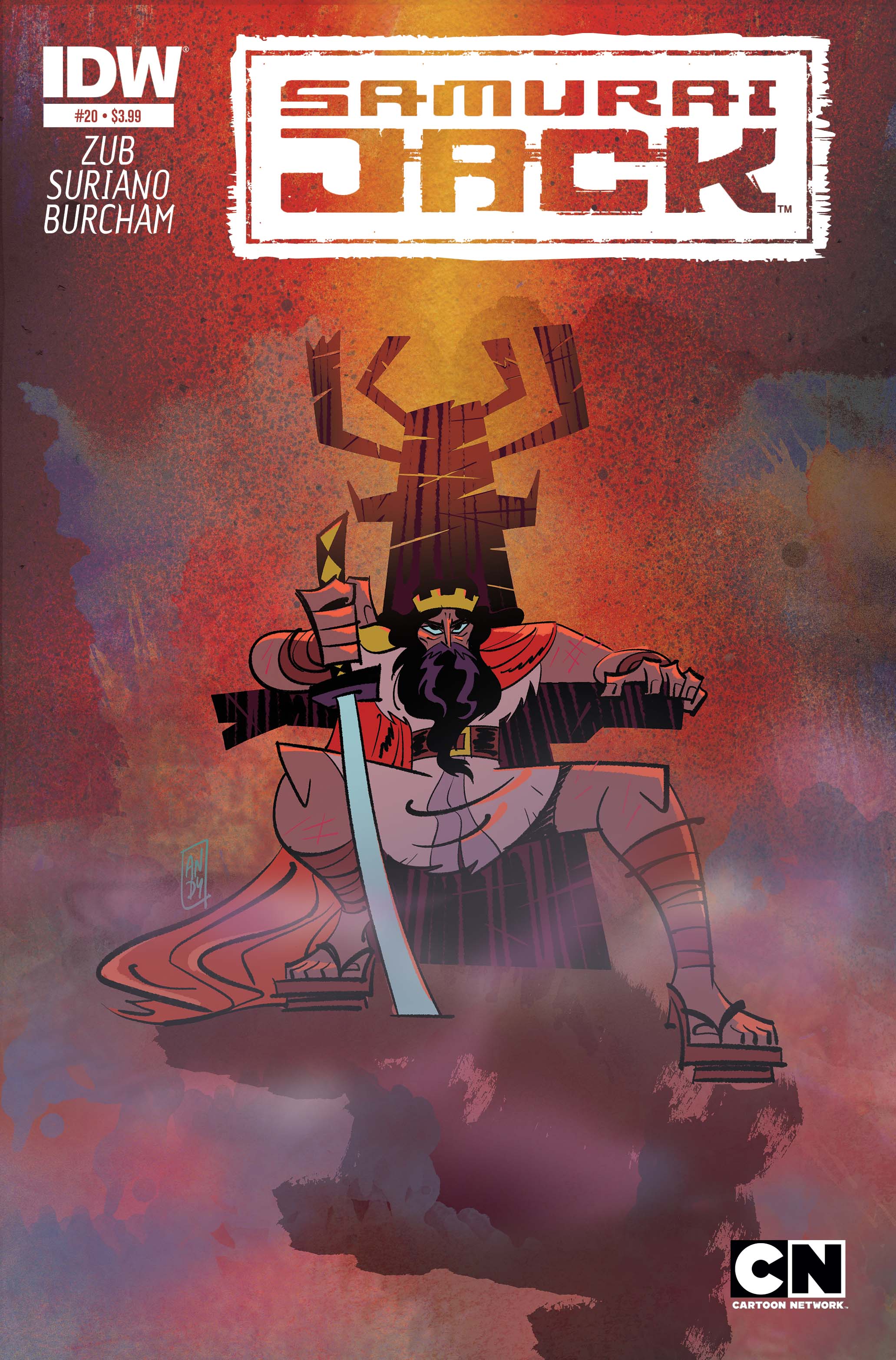
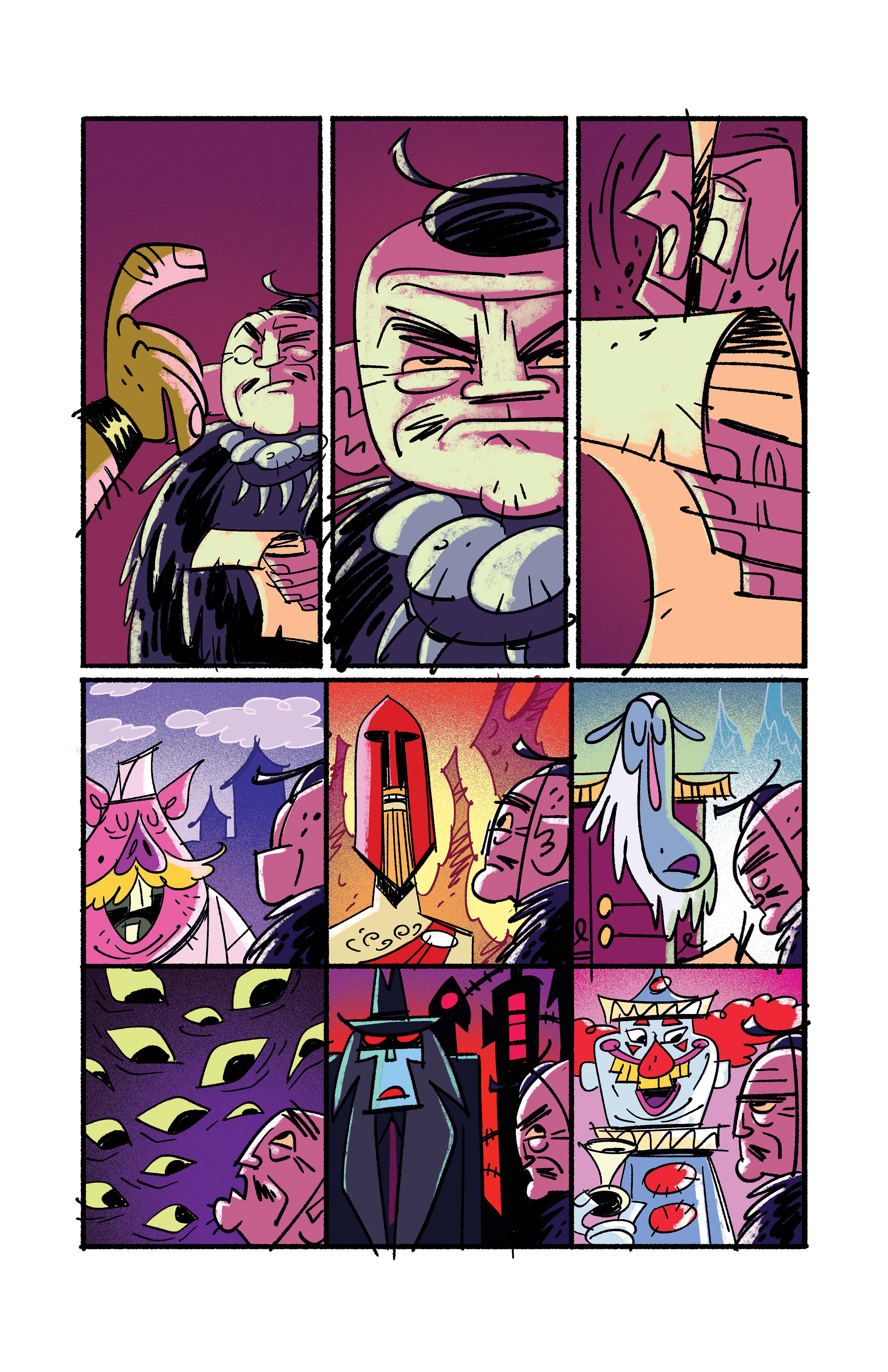
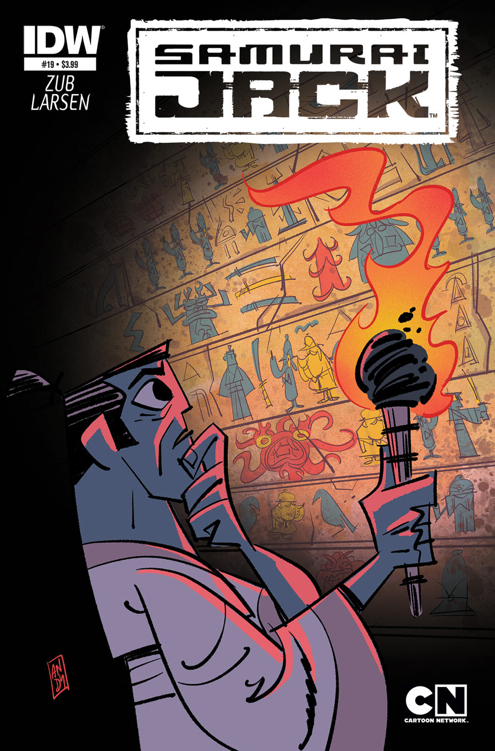
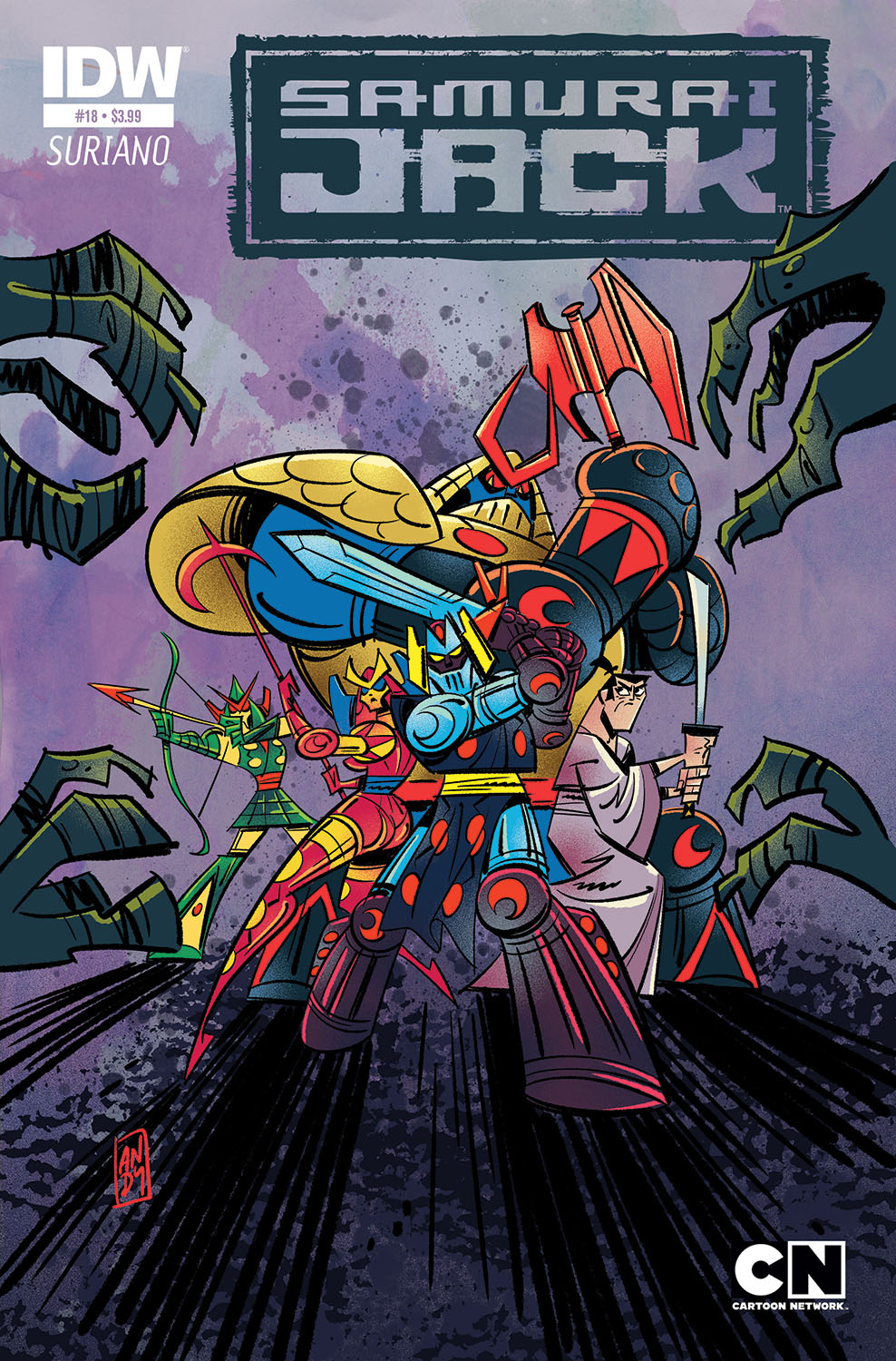
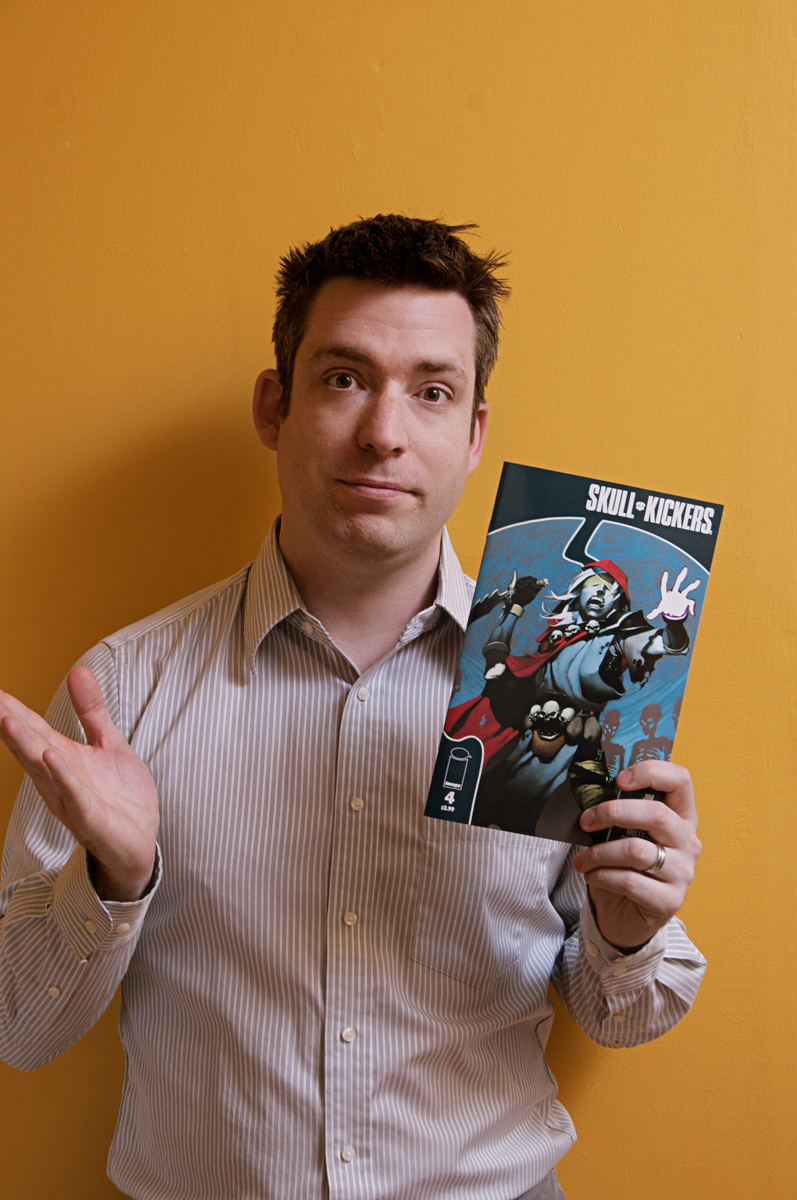

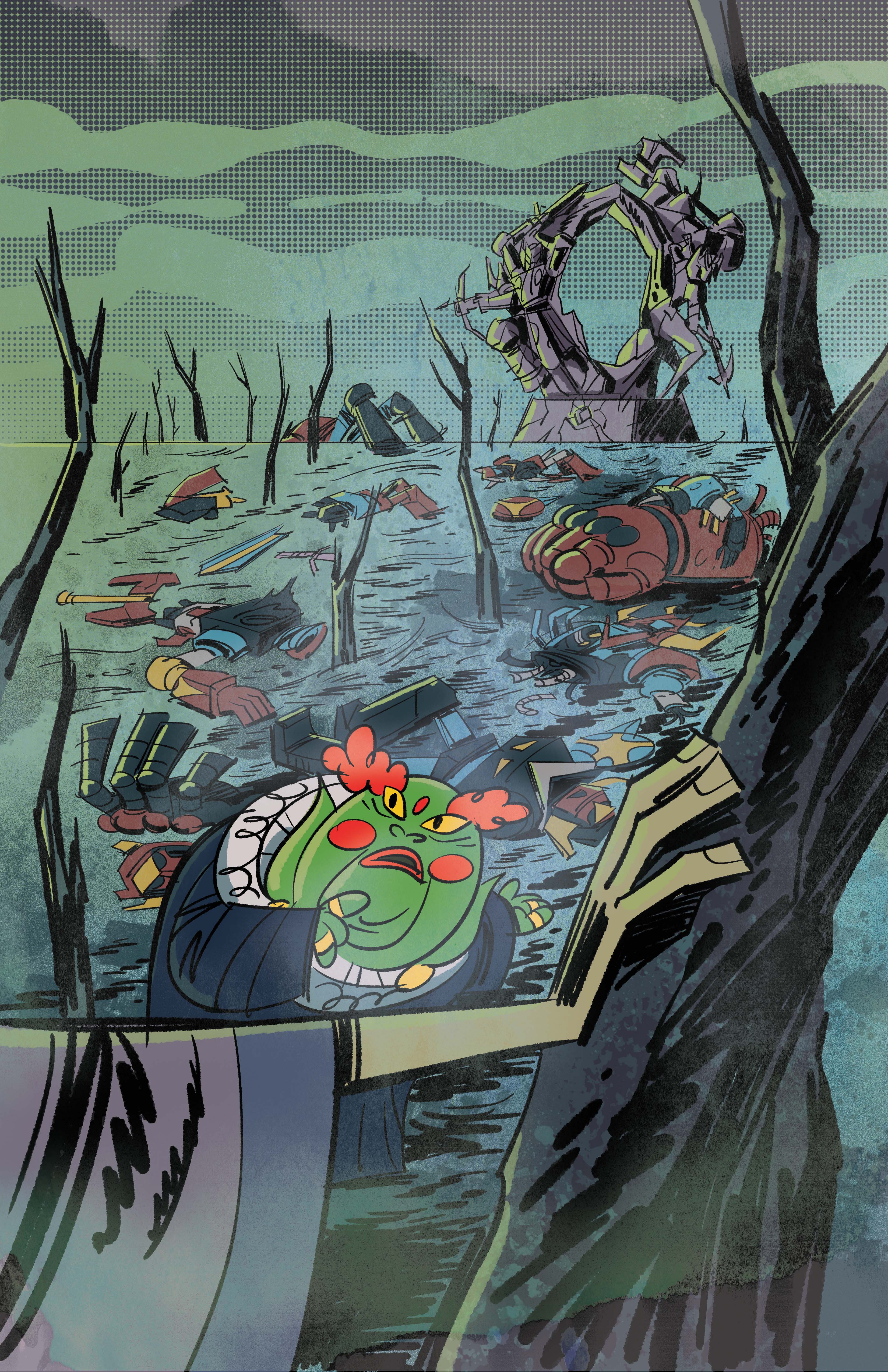
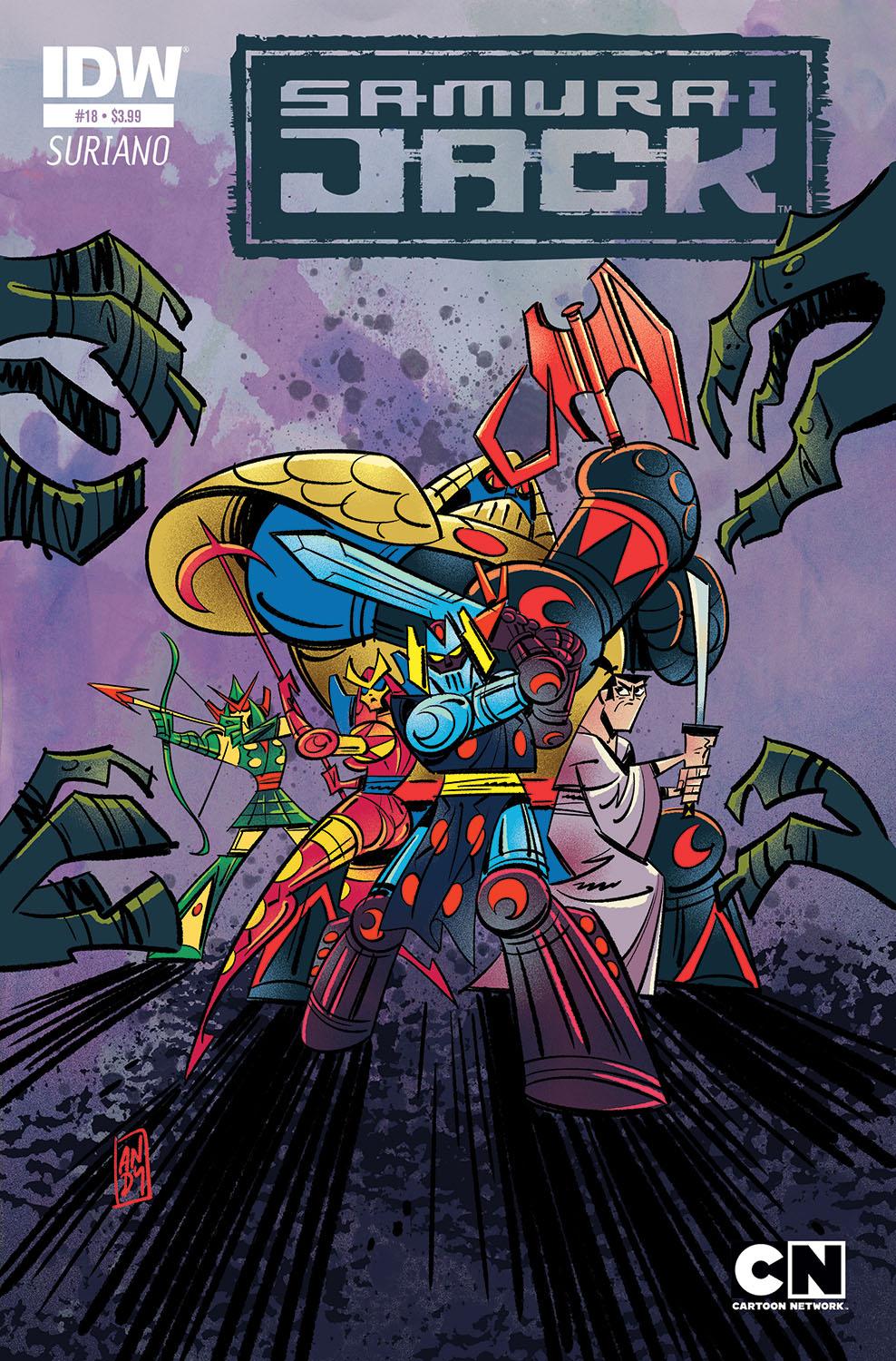
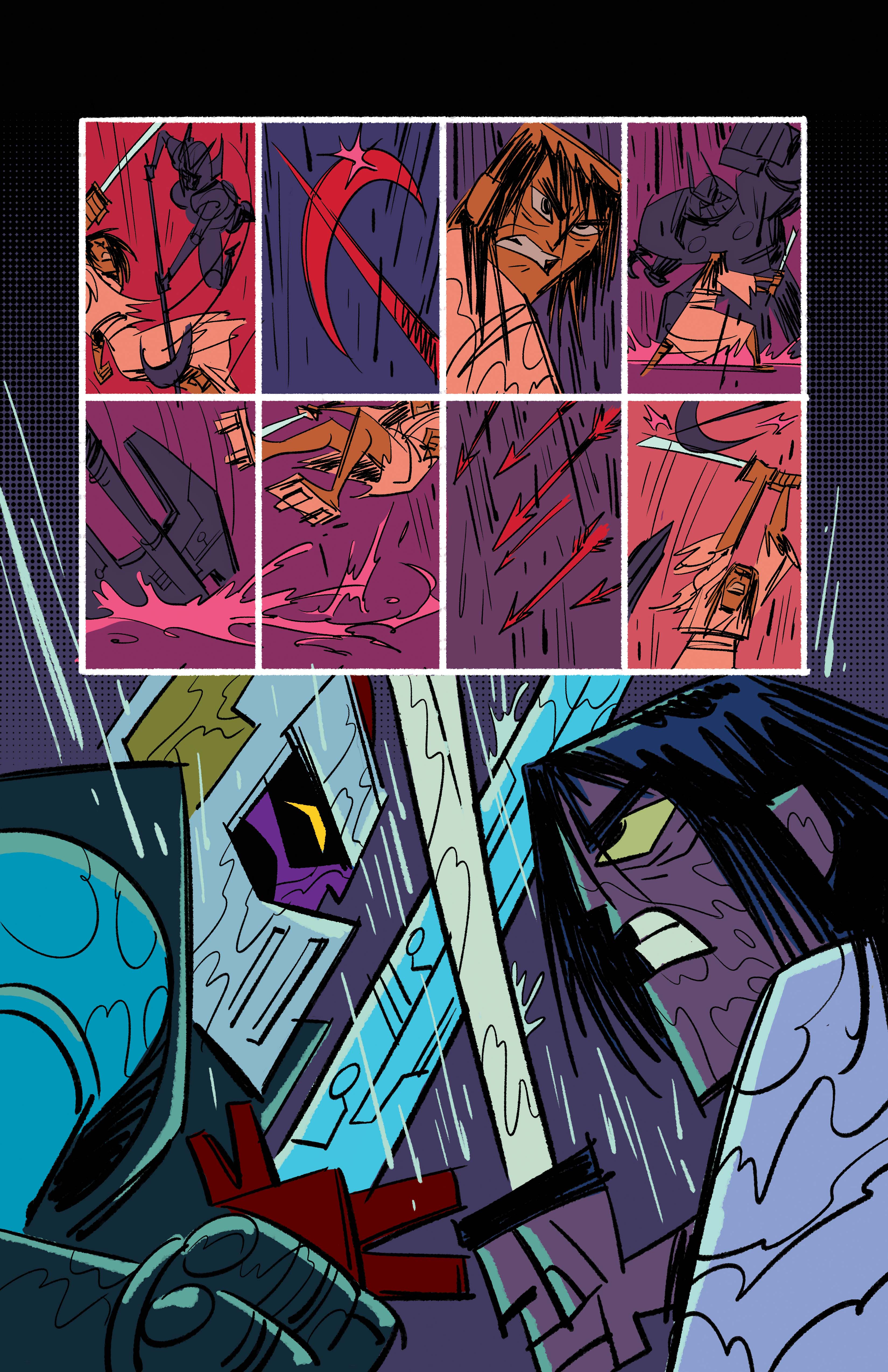
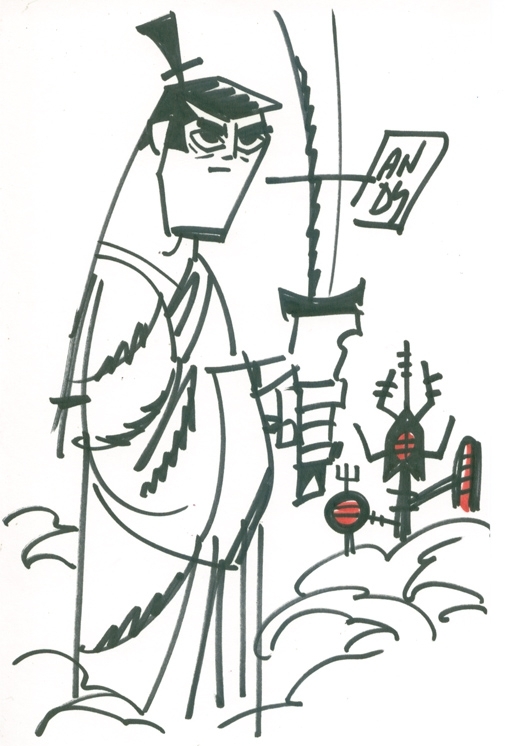
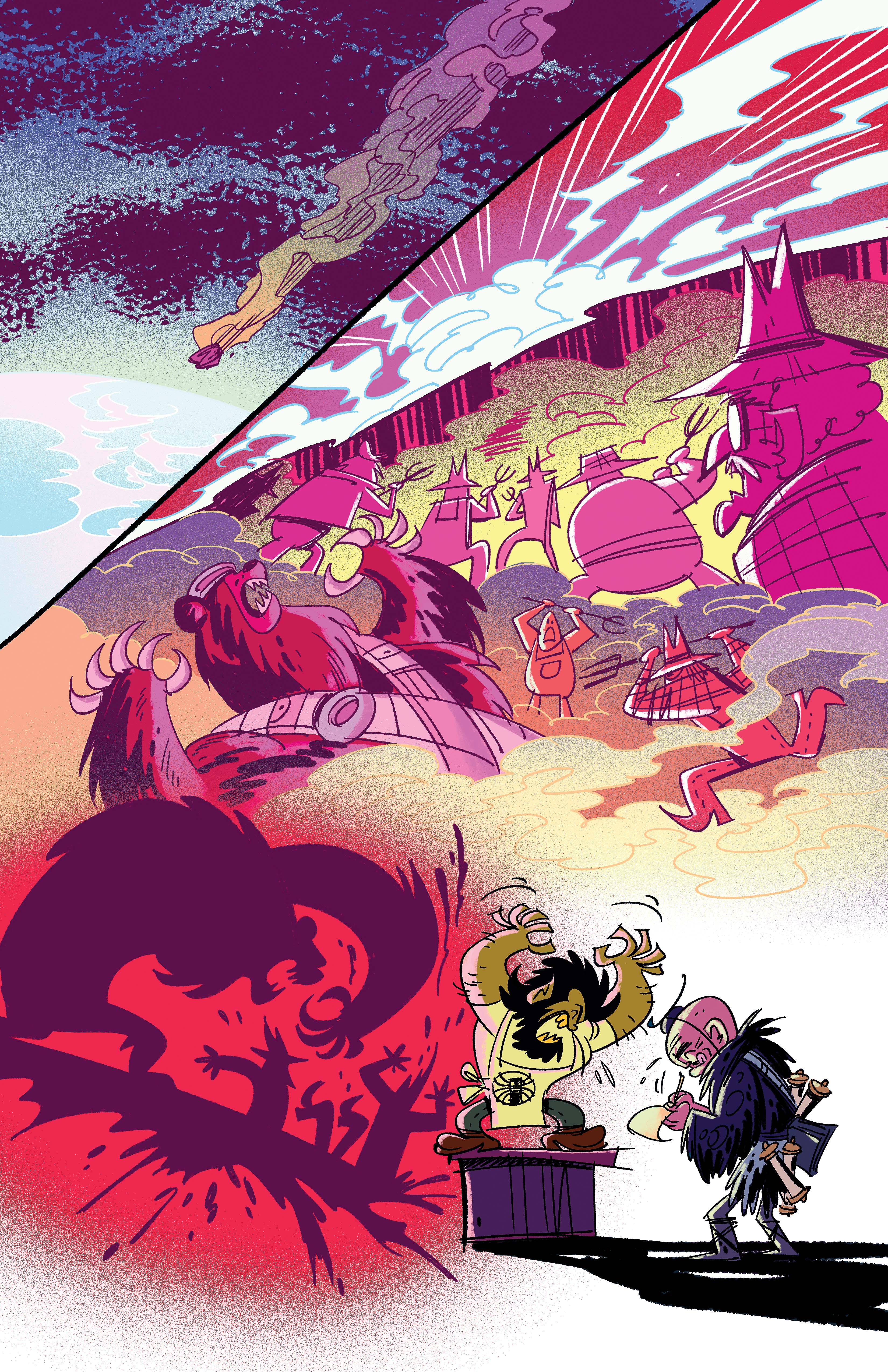

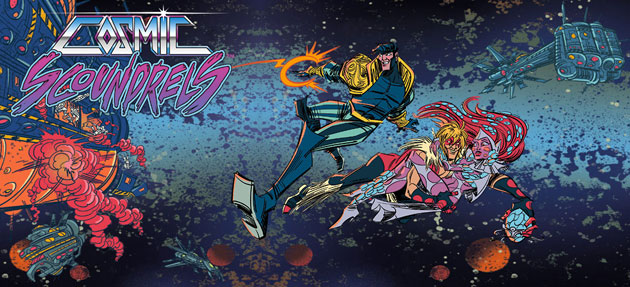
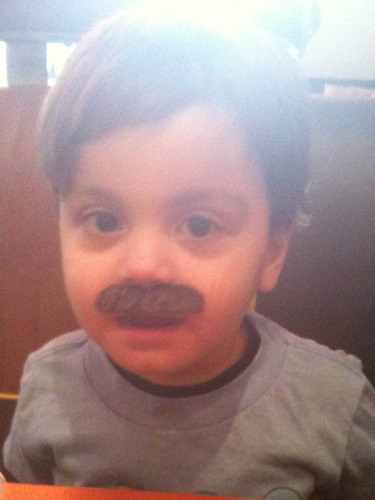
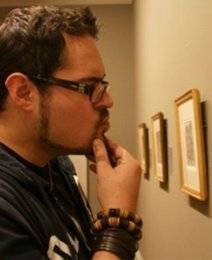


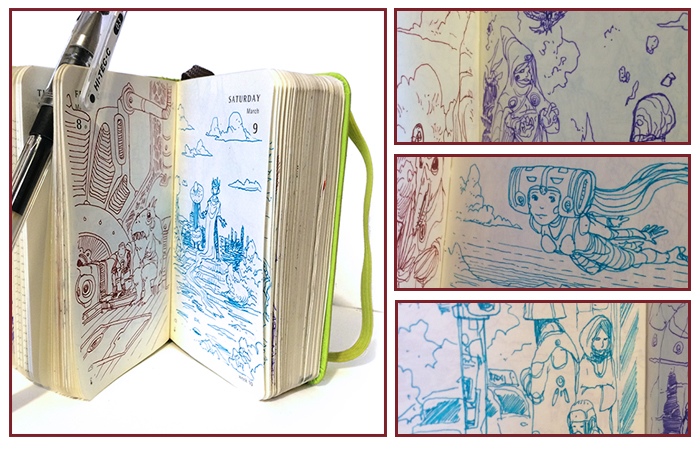


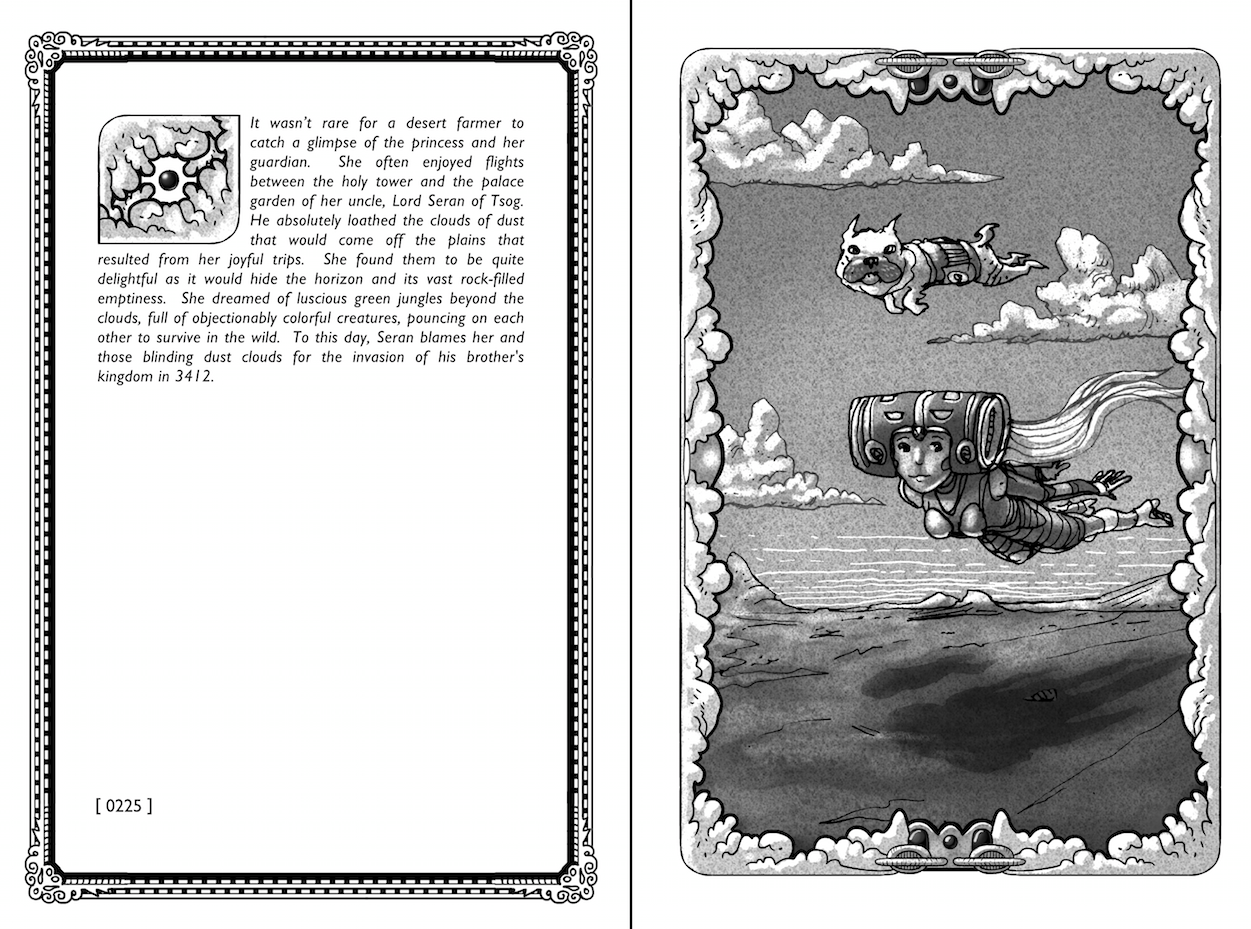


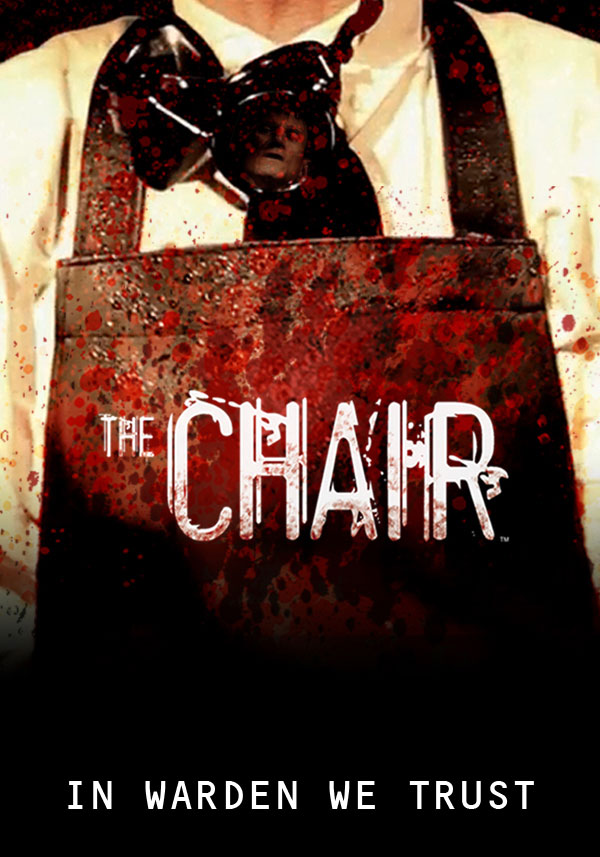

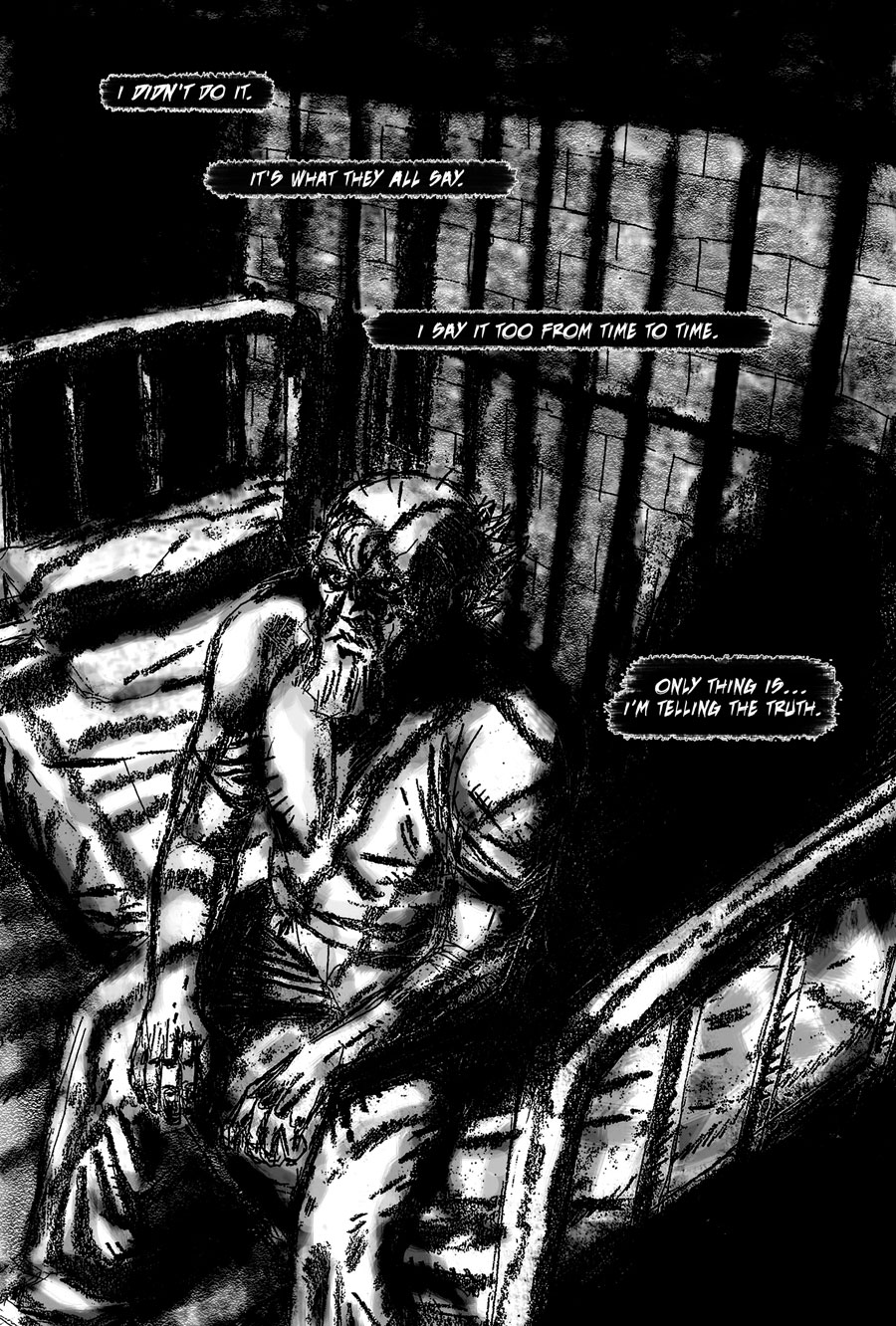

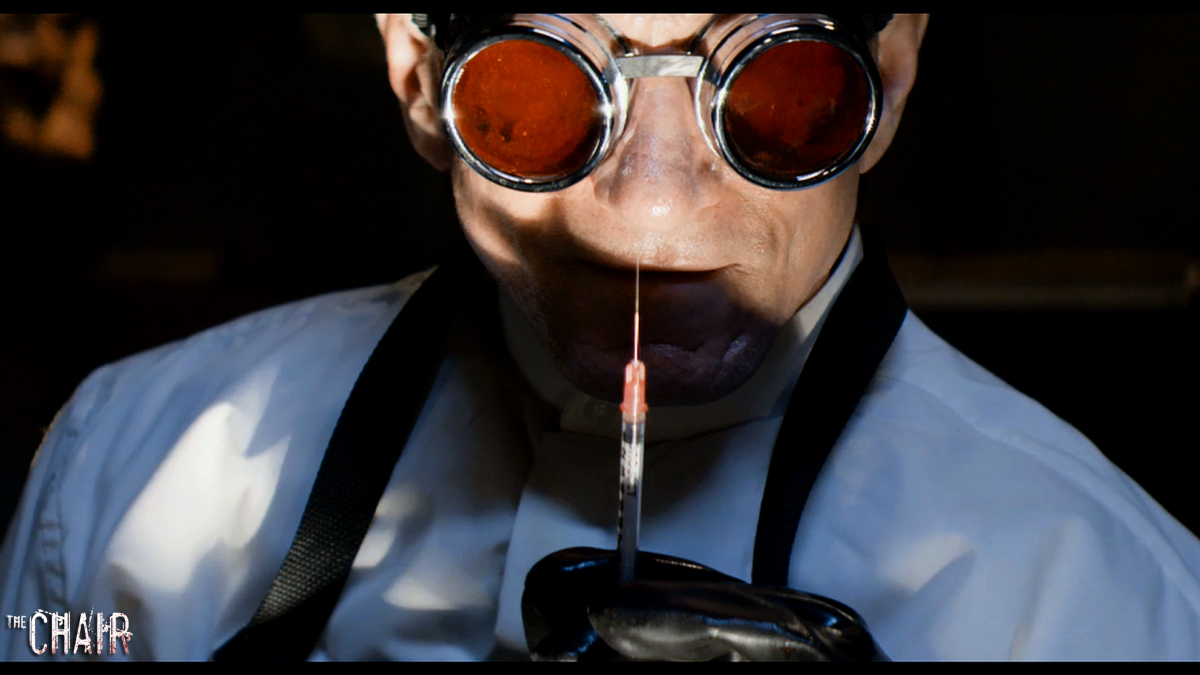
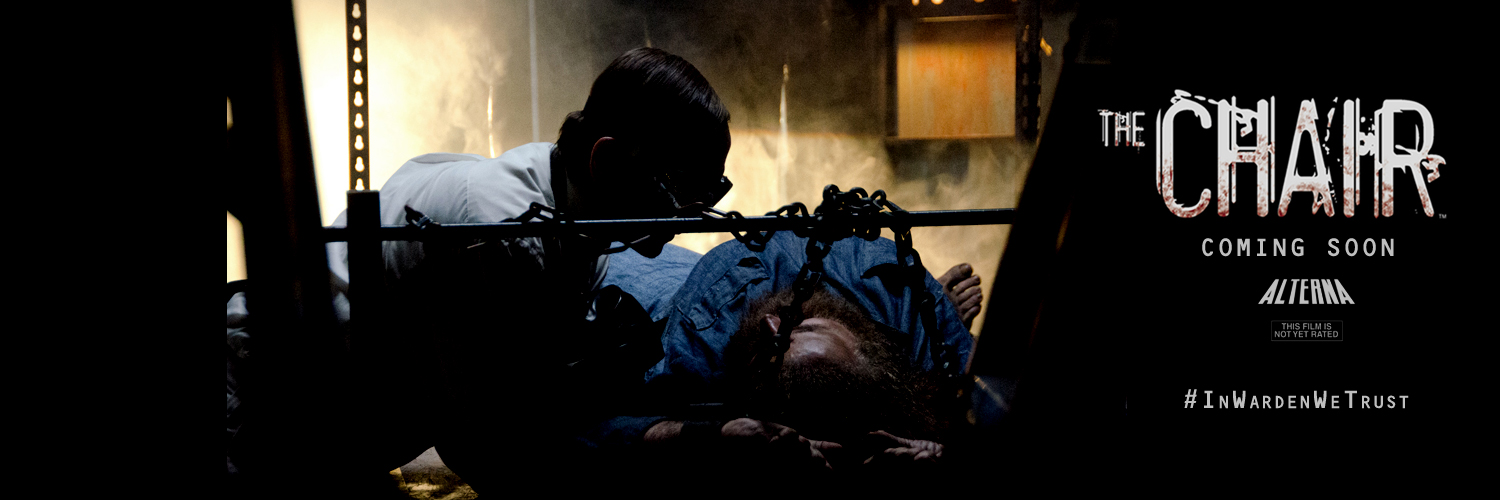
Tony and Josh. The old Bendis Board alumni. glad to hear that both of you are still cranking it out.
‘
Congrats, guys.
–ron ‘Shwicaz’ thibodeau